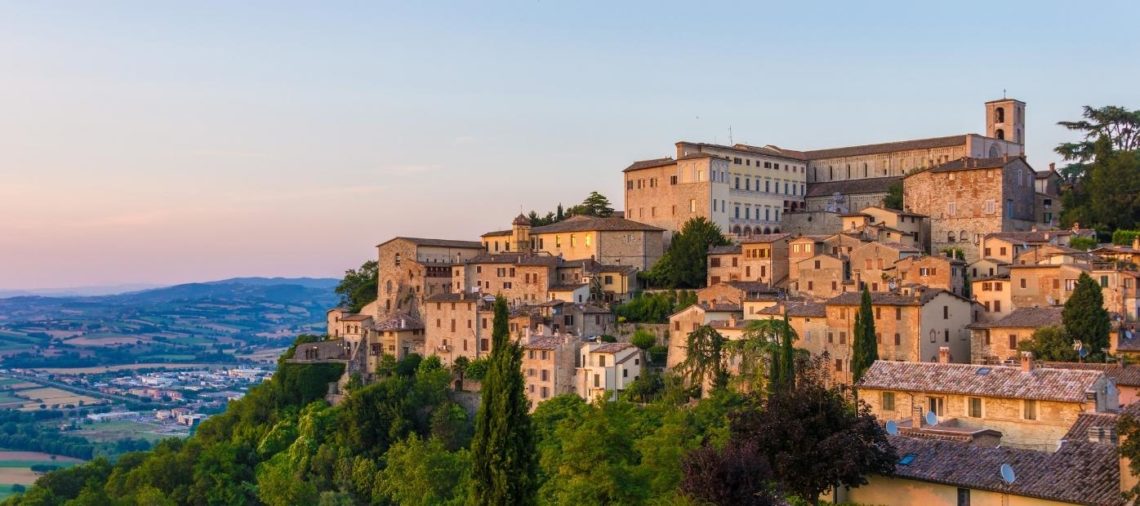Planning a trip to Italy and not sure where to go? Take a look at the following to find out a bit about the historical attractions in the Umbria region.
This area of central Italy is famous for its medieval towns and settlements, which offer tourists a picturesque view and feeling from somewhere far back in the Renaissance era. Due to its abundance of woodlands, meadows, and pastures, Umbria is known as the Green Heart of Italy. As an interesting fact, Umbria is the only Italian region without a coastline or border with another country, being surrounded by Lazio, Tuscany, and Le Marche and located in the heart of Central Italy.
Umbria’s history is long and full of events. It is well-known that Umbria’s language was Umbrian in ancient times. Each region of Italy had its own distinctive dialect, and this language was part of the group of Italian languages with ties to Oscan and Latin. It is believed that the prehistoric community of Umbria lived in the Apennine region, situated between the Adriatic Sea and the Tiber River. Nevertheless, the Umbria region was originally home to diverse communities, including the Etruscans.
Until 1860, Umbria was a papal state. Perugia’s people destroyed the Rocca Paolina during the Italian unification, symbolizing papal oppression.
In 1861, Perugia became the capital of the unitarian region of Umbria and became part of the Kingdom of Italy. Today, it has two provinces: the northern one is Perugia province, while the area of Terni, in the south, is three times its size and population.
History lovers will love Umbria. Perugia, its regional capital, has beautiful Renaissance architecture and some excellent galleries that showcase it. Visitors can explore the rich history of Italy in cities such as Assisi, Spoleto, Spello, and Gubbio, with their monasteries, churches, and historical structures. That’s why, if you are in a trip to this lovely region, you shouldn’t miss these 10 of the most beautiful medieval town in Umbria:
1 Assisi
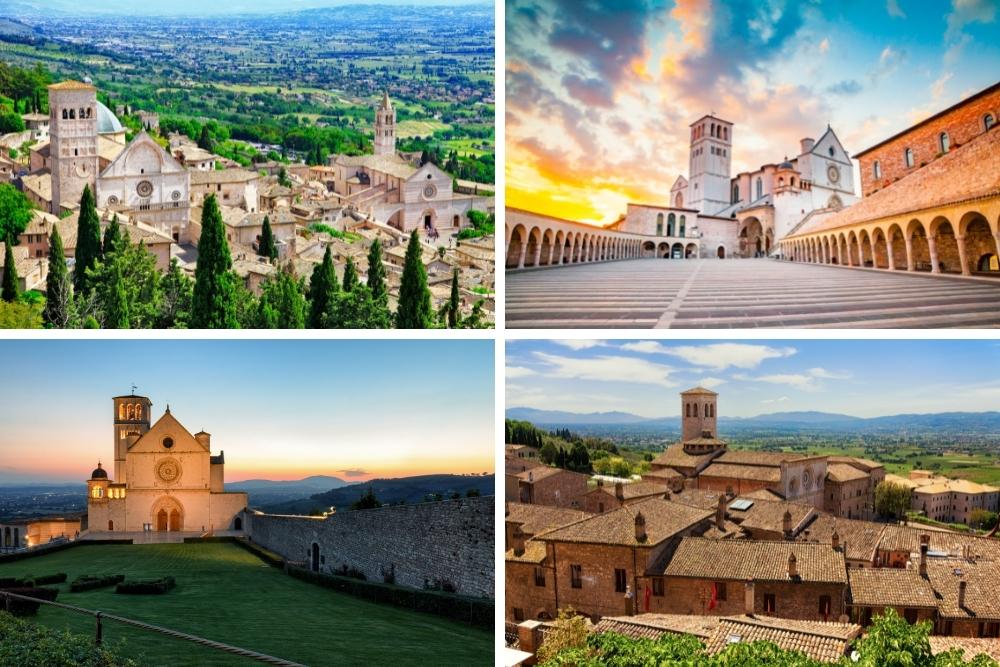
Assisi is a UNESCO heritage site, also the birthplace of the country’s spiritual patron, Saint Francis or San Francesco. The area is full of museums, churches, and medieval ruins, attracting many tourists and pilgrims besides the saint’s tomb.
Basilica di San Francesco (Basilica of Saint Francis) is located at the western end of the town and can probably be recognized by its massive arched buttresses. In 1182, Francis was born in Assisi, and the basilica that bears his name was opened two years after his death in 1228. The basilica’s walls were decorated by the greatest artists of the time, including Giotto, Cimabue, Simone Martini, and Pietro Lorenzetti, between the late 13th and early 14th centuries.
Besides Basilica di San Francisco, in Assisi you can visit the ancient Tempio de Minerva (an ancient Roman temple of six columns, built in the first century BC during the reign of Augustus), Basilica di Santa Maria degli Angeli (where St Francis chose to live together with the poor), the Roman Forum and Archeological Museum.
2 Gubbio
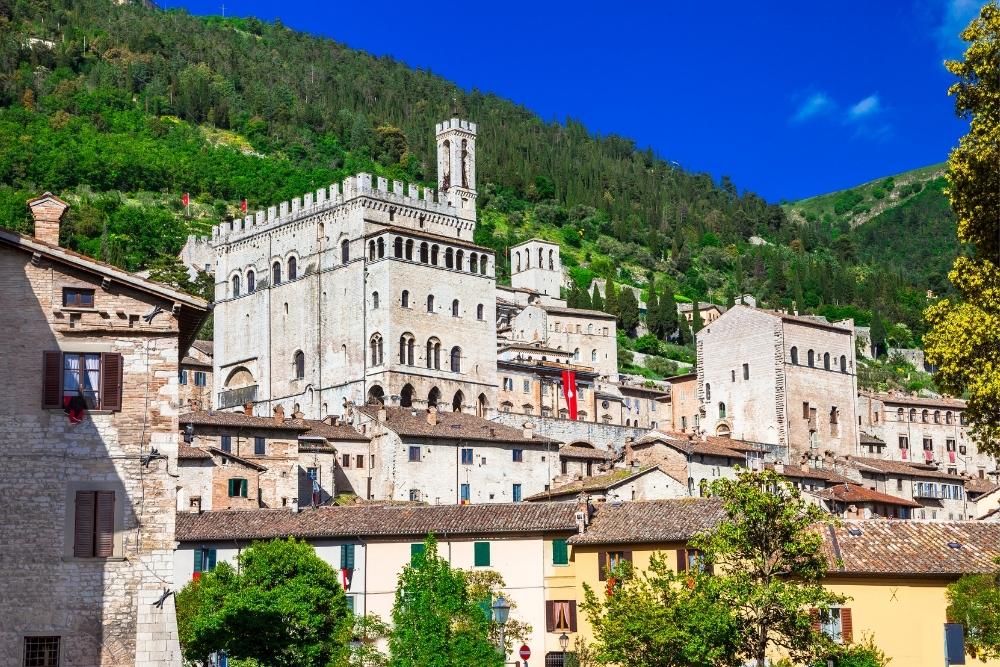
The ancient city of Gubbio in Umbria has remained remarkably well-preserved over the centuries, with many monuments witnessing its glory years. From an architectural perspective, it reflects the apex of medieval civilization and society in the 1200-the 1300s, which was based on the guild system. It is a medieval town with numerous historical monuments, mainly of limestone structure. It has a medieval, gothic, and renaissance feel, highlighted by the architectural styles.
A major attraction is the Basilica of Sant’Ubaldo, a Roman Catholic church overlooking the Umbrian valley. Based on medieval structures with brick walls, it has the appearance of a citadel.
Palazzo Consoli, built in the 1300s as the town’s civic and administrative heart, houses Gubbio’s major museum collections. The entrance is through a towering hall with barrel vaults. Here, the Iguvine Tablets are the palace’s most prized exhibit. The engraved bronze sheets serve as a Rosetta Stone for translating ancient Umbrian languages. Historically, these inscriptions provide most of what historians know about the Umbri.
Are you planning a vacation in Italy and want to find more about this beautiful European country? Here is a great selection of books about Italy.
3 Perugia
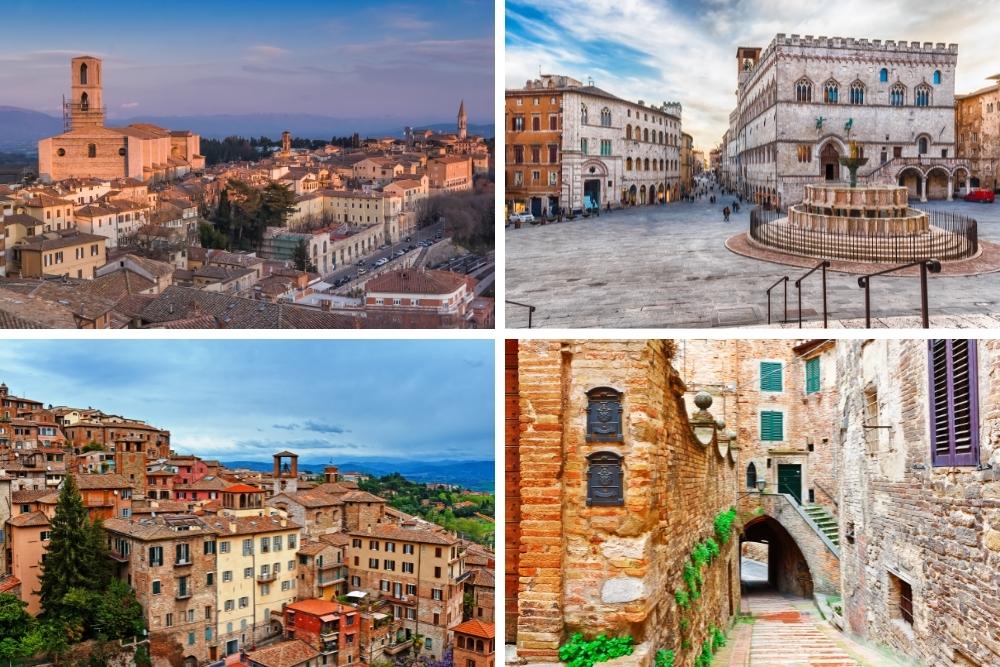
Perugia is the capital of Umbria and a hilly region with many historical antecedents. There are many places to see here, plus the transport links are excellent. For this reason, some of the hottest hotels in the region are located here. Even the Eurochocolate event, held every year in October, makes Perugia an irresistible tourist attraction for all chocolate lovers.
Perugia’s Piazza IV Novembre is home to a number of famous monuments, including the Fontana Maggiore, the Cathedral of San Lorenzo, and the Palazzo dei Priori (which functioned as the Town Hall). Despite their impressiveness, these monuments are often used as a backdrop for many students sipping wine from plastic cups, playing instruments, or enjoying gelato.
Nicola and Giovanni Pisano, renowned Tuscan stone-carvers, created reliefs on the Fontana Maggiore of the 13th century, one of the most beautiful fountains in the piazza. The two basins are made from white and pink stones, and a trio of bronze nymphs holds an urn from which water flows.
Visitors who want to see a collection of paintings specifically from Umbrian artists should consider visiting the National Gallery of Umbria. On the second floor, there are permanent exhibitions and rotating temporary collections.
And it’s no secret that Corso Vannucci is Perugia’s version of Oxford Street or the Champs-Elysees. Along the wide, vehicle-free street that runs from Giardini Carducci to Piazza IV Novembre, there are many cafes, street musicians, and bars.
The enormous Palazzo dei Priori, which sits across from the Cathedral in Piazza IV Novembre, has been designed in an ornate Gothic style. Located in Perugia’s historical center, this ancient building has played an important role in the city’s politics since the 1300s and inside the palace are many frescoes depicting scenes from the Bible, as well as a lot of rich decoration.
4 Spello
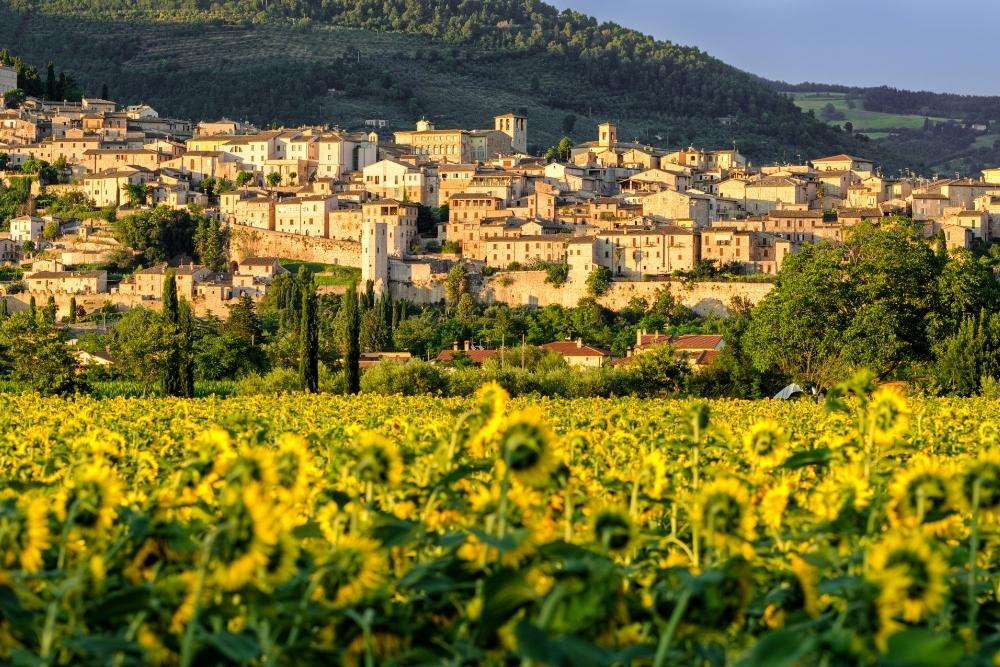
Another historic town that sits on Mount Subasio and from where you can see the whole of Perugia. This town was called Flavia Constans during the reign of Constantine. There are many tourist attractions here, such as Santa Maria Maggiore, Palazzo dei Canonici, Sant’Andrea, San Claudio, etc.
There are various gates through which you can enter Spello: these include Porta Consolare, Porta Venere, Porta Urbica, Porta Romana, and Porta San Sisto. Presuming the trip begins from Porta Consulare, you enter the medieval village, Terziere del Borgo, with its narrow streets and houses that are typical of the period.
At the end of ‘Consular Street’ sits the 11th century Church of Santa Maria Maggiore, one of the most important religious buildings in the city. In 1085, the church belonged to the monks of ‘Camaldoli’, according to historical sources.
Discover the Roman House, dating from the first century AD, whose wall inscriptions suggest that it was owned by Vespasian’s mother. Then continue with the church of S. Andrea, built in 1258, and the church of S. Lorenzo with its twelfth-century loggia and a wonderful facade.
5 Orvieto
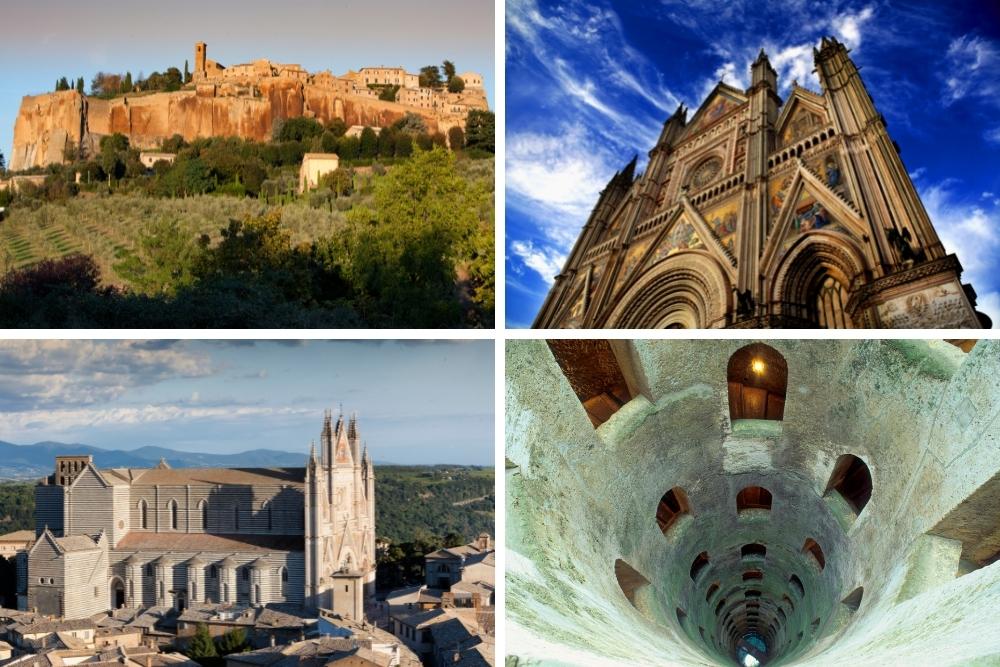
Orvieto is situated on a cliff and offers magnificent views. In addition, there are monuments and structures dating back hundreds of years. Its beautiful cathedral is famous throughout the country.
Most of Orvieto’s tourist attractions can be found in the old town, reached by funicular (the new town is downhill and is served by a road, so you can come by car). Most of them are underground, carved into the porous tufa since the Etruscan era.
Top tourist attraction in Orvieto is the Duomo di Orvieto. There is something striking about this church with its unusual facade, quite different from others you have seen elsewhere in Italy. On the outside, its interior decoration seems as if it was painted – black basalt and yellow limestone alternated with sculptures, stained glass, and brightly colored mosaics by the finest artists of the day.
Another attraction is Pozzo di San Patrizio. During the Sack of Rome, Pope Clement VII commissioned this 53m-deep (174ft) well in Orvieto to supply the city with water in case he was unable to travel outside its walls and return to Rome. The well was constructed between 1527 and 1537 and is now open to the public. You can descend to its depths via 200 steps and admire the architectural wonder.
The third touristic attraction proposed is Torre del Moro. In the late 13th century, a quadrangular tower overlooking the heart of the old city was built to keep an eye out for invading forces. After the construction of the aqueduct system in 1876, it was converted into a cistern.
Chiesa di Sant’Andrea, Il Labirinto di Adriano, Palazzo del Popolo, Museo Archeologico Nazionale, Museo Claudio Faina, Orvieto Underground and Pozzo della Cava, Fortezza dell’Albornoz are other fantastic places to visit in Orvieto.
6 Spoleto
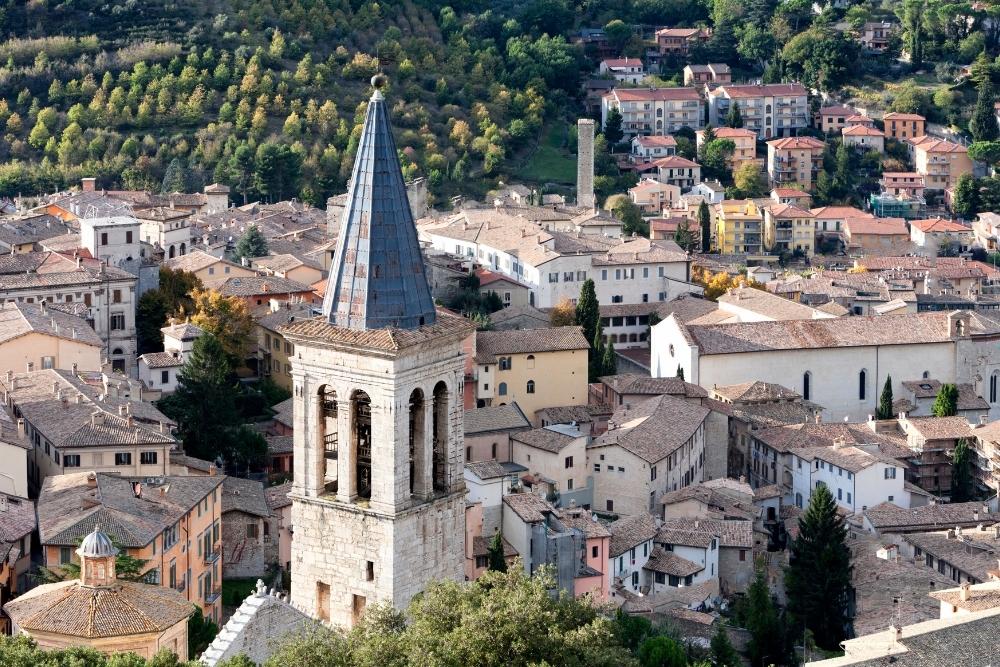
Spoleto is a fortified town that lies in the southern part of the region. The city was founded by the Huns more than 2500 years ago. In 241 BC, it became a Roman colony, and, as a result of this historical period, the city was given the name “Spoletium”. You will see signs of the ancient Roman influence in the buildings, in the monuments, and in the works of art.
Many medieval and Roman structures can be found here, the most famous being the Ponte delle Torri or Bridge of Towers. Spoleto is also renowned for the Festival dei due mondi or Festival of Two Worlds, held here every year between June and July.
7 Todi
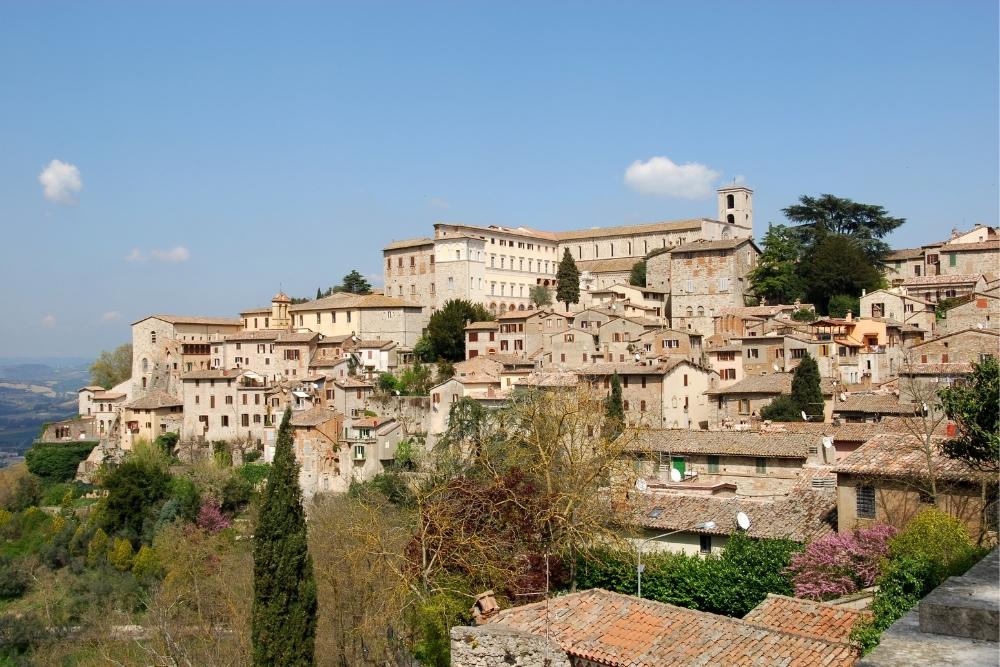
A charming little settlement located in the center of the region and surrounded by historical attractions, which can be visited in a few hours. The Todi Art Festival held towards the end of summer, the Gran Premio Internazionale Mongolfieristico, an international balloon festival and Carnevalandia (carnival) held in February are just some of the events of interest to tourists.
A tour of Todi begins at the Piazza del Popolo, also known as the Palazzo del Popolo. In the heart of this historic city, you will find some of the city’s most beautiful and significant buildings. The understated serenity of the surrounding area makes this an ideal place to escape everyday life. It is considered one of the most photogenic piazzas in central Italy.
Santa Maria della Consolazione, a pilgrimage church in Renaissance style, is a sight to behold. This church’s symmetrical design, distinctive dome, and tall walls will amaze you from near and from a distance as well.
Civic Museum, Cattedrale della Santissima Annunziata, Roccafiore Winery or San Fortunato Church are a few of other points of interest in Todi.
8 Lago Trasimeno and its villages
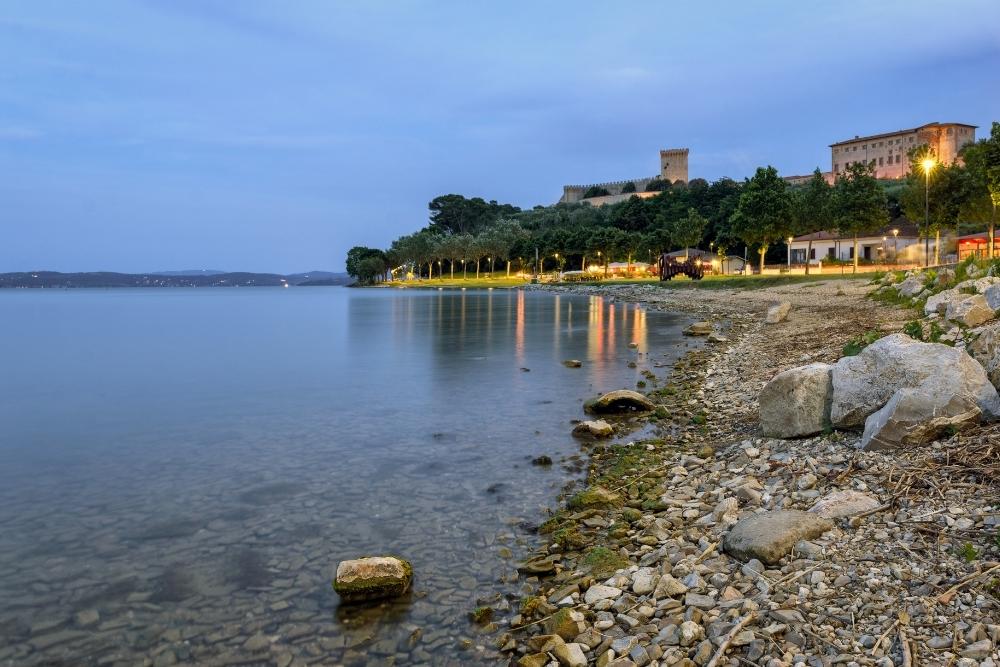
Trasimeno Lake lies between the green hills of Umbria and is the fourth biggest lake in Italy. There are breathtakingly beautiful villages along its banks, such as Castiglione del Lago, Passignano sul Trasimeno, San Feliciano, Tuoro sul Trasimeno, Castel Rigone, and also fascinating villages further inland, such as the Etruscan Panicale, Lisciano Niccone, Piegaro. Three small islands accessible by boat await tourists.
Taking a tour of the islands by ferry is undoubtedly one of the best things to do in Trasimeno Lake! You can leave your car at San Feliciano and take the ferry to Isola Polvese in the morning. Visit Isola Polvese, then take the ferry to San Feliciano and return to Passignano or Tuoro to take the ferry to Isola Maggiore.
9 Ferentillo
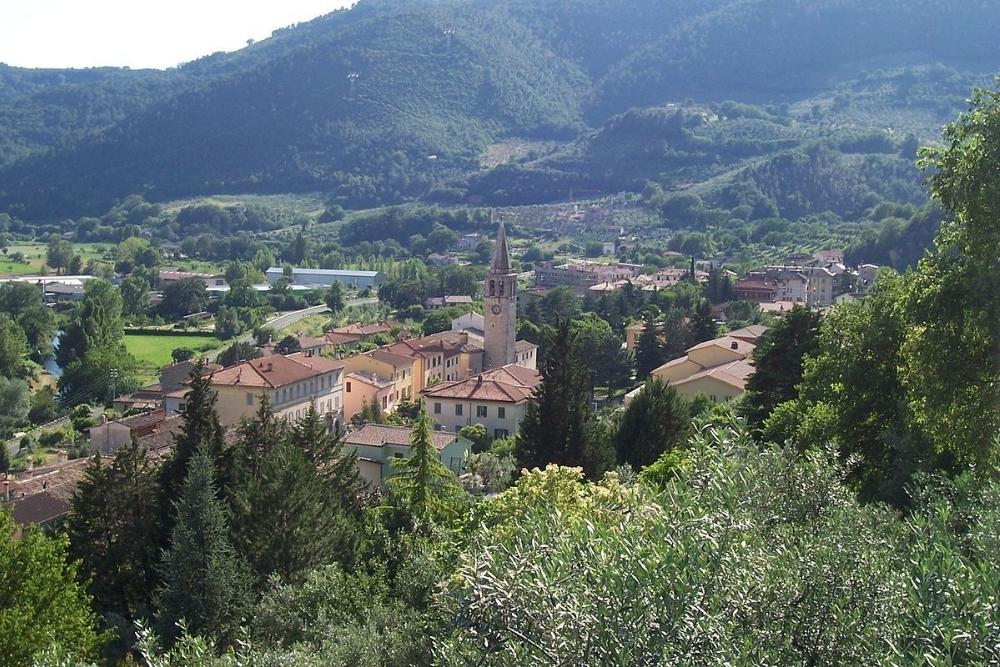
Ferentillo stands in the Valnerina river valley near Terni, surrounded by medieval-style protective walls. There are two castles on opposite sides of the valley, still guarding the town below. The small town is still surrounded by forested hills. It looks much like it did during the Middle Ages, with the unspoiled woods contributing to the effect. You can find the beautiful 13th-century church of San Giovanni Battista in Ferentillo, as well as the elegant Palazzo Silvani-Loreni on the Piazza Garibaldi, with an elegant atrium between the grand staircase and the garden.
But Ferentillo is mainly known for the bizarre Museum of Mummies located in the basement of the church of Santo Stefano. The bodies buried here have been spectacularly transformed into mummies by the attack of microorganisms.
10 Panicale
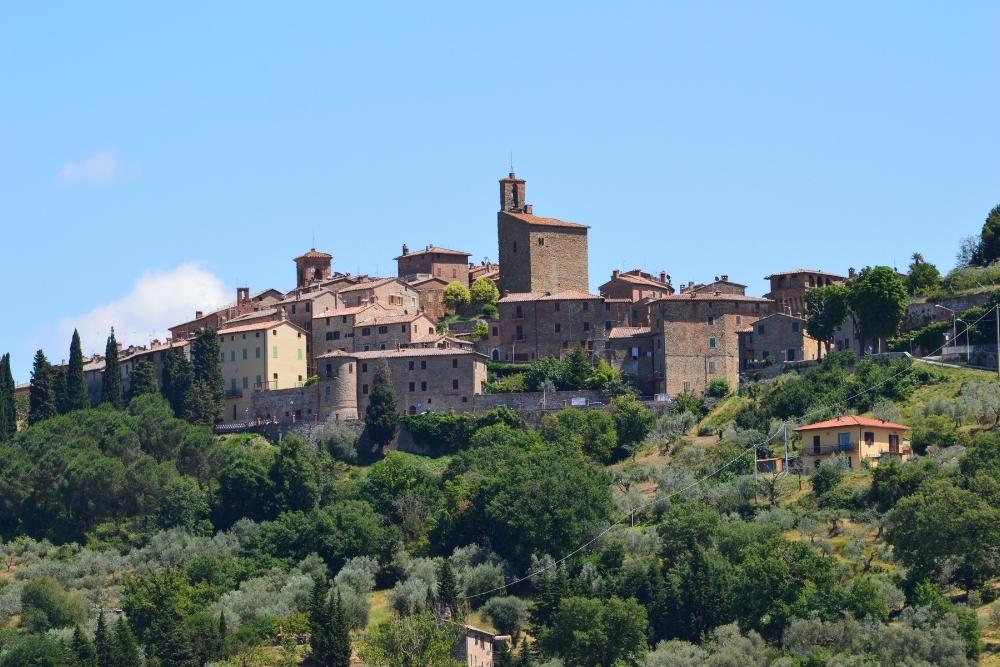
The town of Panicale became the first in Italy to declare independence in 1037. It granted control to Perugia in the 13th century, but again regained its independence in 1316 and established a government of its own.
The historical center has retained its typical medieval layout. There are three piazzas between the two entrance gates, Porta Fiorentina and Porta Perugina. On the lowest one, you’ll find the 15th-century fountain, on the second one, the grand Collegiata di San Michele shows the religious power of the town, and on the third is where you’ll find the political core of the town, the Palace of the Podesta.
From an artistic standpoint, among the most important landmarks is the Fountain, built in the late 15th century. Then you should visit the Collegiata di San Michele Arcangelo, a fine example of Umbrian Baroque architecture, the Palazzo del Podestà, dating to the 1300s, with its double lancet windows and a tall tower, and the Cesare Caporali Theatre, made entirely of wood with gilded stucco and painted garlands.
The location itself isn’t very popular, but it’s a good starting point if you want to visit both Tuscany and Umbria, as it’s situated on the border between them.
The medieval towns of Umbria are interesting because they are so unique and there is so much history surrounding them. They offer visitors an experience that is not seen anywhere else, so a trip to Umbria, Italy, could be a fantastic idea.
You may also like: What to do in Naples for free or on a budget

